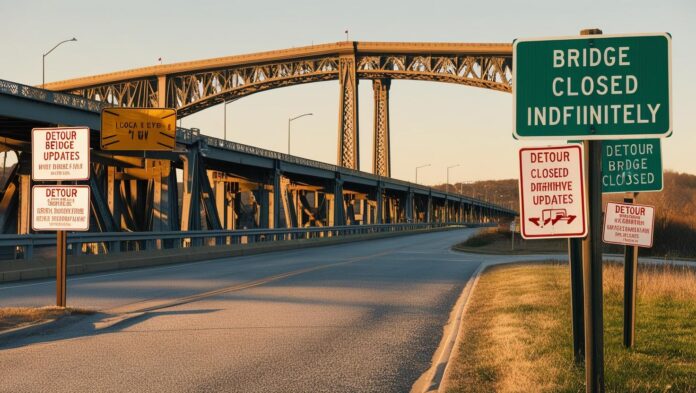Heavy Duty Cable Ladders
Why Choose Heavy Duty Ladders?
Heavy-duty cable ladders are specifically engineered to support large, heavy cables, cable bundles, and even pipes in environments that require robust and reliable infrastructure. These ladders are designed to handle the demanding conditions often found in industrial, commercial, and power distribution sectors. The primary advantage of heavy-duty cable ladder is their ability to safely and securely support a wide variety of cables, ensuring the system can handle not just the weight of the cables but also the strain caused by long spans and harsh environmental conditions.
In environments where there is a need for long cable runs over large distances, heavy-duty ladders provide the necessary structural integrity to prevent sagging or shifting, which can cause damage to cables or create a potential safety hazard. Additionally, these ladders allow for flexibility in cable routing, making them ideal for high-volume installations that require scalability and the ability to add or remove cables over time.
In many industrial applications, materials like Chopped Strand Mat are used to enhance the durability and strength of cable management systems. These materials offer excellent resistance to corrosion and mechanical stress, making them a great complement to heavy-duty cable ladders, especially in environments prone to harsh conditions. For example, Chopped Strand Mat is used in combination with fiberglass components to create a reinforced system that can handle even the heaviest loads.
Applications in High-Volume Environments
Heavy-duty cable ladders are commonly used in high-volume, high-stress environments such as power plants, telecommunications hubs, and large industrial facilities.
- Power Plants: In power generation facilities, the electrical infrastructure often requires extensive cable management solutions. Power plants rely on heavy-duty ladders to support high-voltage power cables, control wiring, and interconnecting cables that span long distances across the facility. These ladders provide the stability and capacity needed to manage the complex web of cables essential for powering plants and substations.
- Telecommunications: In the telecom industry, where thousands of miles of cabling are required for data transmission and network maintenance, heavy-duty cable ladders ensure that the cables remain organized, accessible, and protected from environmental stresses. Whether in data centers or outdoor telecom installations, cable ladders are critical for managing the high volume of cables used in modern telecommunications infrastructure.
- Large Industrial Facilities: Manufacturing plants, factories, and refineries often require heavy-duty cable ladders to support electrical systems that power machinery, control systems, and safety equipment. These ladders are typically used to route power and control cables across long distances, ensuring that the cables are supported securely and that airflow around the cables is maintained to prevent overheating.
- Commercial Buildings: Large commercial buildings such as shopping malls, airports, and office complexes often require cable management systems that can handle a large volume of low and high-voltage wiring. Heavy-duty cable ladders provide a robust solution for managing these cables while also offering flexibility for future expansion.
Specifications of Heavy Duty Cable Ladders
Heavy-duty cable ladders are available in various configurations and materials to meet the specific needs of each installation. Some common specifications include:
- Height: The standard height of a heavy-duty ladder is typically around 150mm. This allows enough space for large cable bundles to be managed without being constrained. The height ensures that even the heaviest cables, such as those used in power distribution systems, are adequately supported.
- Lengths: Heavy-duty cable ladders are generally supplied in standard lengths of 3 meters or 6 meters. These lengths can be easily connected together to form longer runs, and additional lengths can be added as the system grows to accommodate more cables. The flexibility of length makes them suitable for both small and large-scale installations.
- Materials:
- Hot-Dip Galvanized (HG): For applications in outdoor or harsh environments, hot-dip galvanized steel is commonly used to manufacture cable ladders. The galvanization process provides an additional layer of protection against corrosion, making it ideal for installations exposed to moisture, chemicals, or saltwater, such as in offshore facilities or coastal areas.
- Stainless Steel (SS): For more demanding environments that require even greater resistance to corrosion and high-temperature conditions, stainless steel is often chosen. Stainless steel cable ladders are particularly useful in industries like pharmaceuticals, chemical plants, and food processing facilities, where hygiene and durability are critical.
In some highly specialized environments, Fiberglass Sheets are incorporated into the construction of cable ladders to provide enhanced resistance to corrosion and environmental damage. These fiberglass sheets offer a lightweight but strong solution for cable management in environments exposed to chemicals, extreme temperatures, or moisture. The use of fiberglass in combination with other materials can significantly extend the lifespan of cable ladders in challenging conditions.
Strength and Reliability
The primary advantage of heavy-duty cable ladders is their strength and reliability in supporting large and heavy cables over long spans. These ladders are built with reinforced materials and robust construction methods that enable them to bear the weight of substantial cable loads without compromising the integrity of the system.
The design of the ladder, with its side rails and perforated rungs, ensures that cables are securely fastened while allowing for sufficient ventilation to avoid overheating. Heavy-duty ladders can also withstand physical stress, such as vibrations or seismic activity, which is essential in environments where equipment is constantly in motion, or in earthquake-prone regions.
Moreover, the open design of cable ladders facilitates easy inspection and maintenance, as it allows access to the cables without requiring the removal of covers or panels. This ensures that any issues with cable integrity, such as wear or overheating, can be addressed quickly before they become major problems.
In summary, heavy-duty cable ladders are a critical component in industries where large-scale cable management is necessary. With their strength, durability, and ability to handle high cable loads, they are ideal for use in power plants, telecommunications, industrial facilities, and other high-demand environments. By choosing the right materials, such as hot-dip galvanized or stainless steel, these ladders provide long-lasting, reliable support for essential cable infrastructure.



